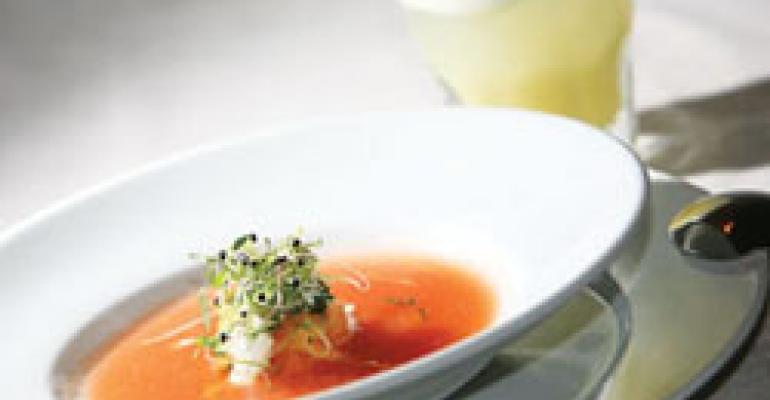When it comes to pairing drinks with food, quality wine, especially red wine, has received plenty of attention, as have craft-brewed beers, both domestic and imported. And cocktails? Well, let’s just say that the jury is still out on that front.
That’s not to say that cocktails and food aren’t a happening pair today; they most definitely are. But the degree of their popularity remains to date very much an unknown quantity.
“I don’t think the general public is quite ready for it yet,” says Darcy O’Neil, who bartends at Trü restaurant in London, Ontario. He also writes about drinks and blogs at
Dale DeGroff might tend to disagree. Having hosted cocktail dinners since 1994, DeGroff has a unique perspective on such matters and says that not only is the public ready for food and cocktail pairing, but that it’s already happening.
“They’re doing it at Audrey’s [referring to Audrey Saunders, of The Pegu Club in New York City] and Julie’s [meaning Julie Reiner, of The Clover Club and Flatiron Lounge, also in New York], where they have small tapaslike foods and cocktail suggestions,” DeGroff says. “Historically, there’s one place where we have always deferred to cocktails over wine, and that’s in Mexican restaurants.”
Of the sweetness of liqueurs, DeGroff says it depends very much on which ones you’re using and how they’re being employed.
“When I first started doing this, I was pretty heavy-handed, and probably two out of every three cocktails I made for dinners were too sweet or fruity or in some way unbalanced,” he says. “But over time you learn to balance flavors.”
Potency is another issue, particularly if the goal is to present a multicourse meal with accompanying cocktails for every dish.
“Alcohol can really numb the palate,” O’Neil says. “So when I’m creating cocktails for pairing, I’m looking to come up with a strength roughly matching that of wine, between 10 percent and 15 percent alcohol.”
DeGroff’s approach is a little different. Rather than limiting the strength of each cocktail, he limits the size.
“When I’m doing cocktail dinners, with the exception of the welcome cocktail, which is usually full-size, I try to keep the quantity down, so I’m serving mini cocktails or tasting-size cocktails,” he says. “It’s a good way to keep alcohol consumption in check.”
In terms of how to craft a cocktail that pairs well with food, Ann Tuennerman, founder of the Tales of the Cocktail event in New Orleans, suggests that beyond simple flavor affinities, cocktails should reflect the style of the kitchen.
“I was on a panel the other day where someone noted that ‘what grows together, goes together,’” Tuennerman says. “I thought that made a lot of sense.”
So, if the kitchen is known for its deft hand with herbs and spices, the bar would probably do well to get muddling, for example. If the portions are generous and the atmosphere is casual, it’s probably not the right place to roll out fussy, pink-tinged cocktails.
Although not a bartender herself, Tuennerman has experience with the art of pairing cocktails and food. Since its inception, Tales of the Cocktail has featured an ever-growing roster of “Spirited Dinners” in which celebrated mixologists partner with local restaurants to craft gala dinners with a different cocktail served with every course.
“In the beginning with the ‘Spirited Dinners,’ we had to explain everything about the concept to people,” Tuennerman says, “but now they have just taken off in popularity, and we don’t have to explain a thing. We’ve gone from 10 dinners in our first year to 27 in 2008.”
The dinners “are great for the mixologists, great for the restaurants and great for the public,” Tuennerman says. “It’s a win-win-win situation.”

